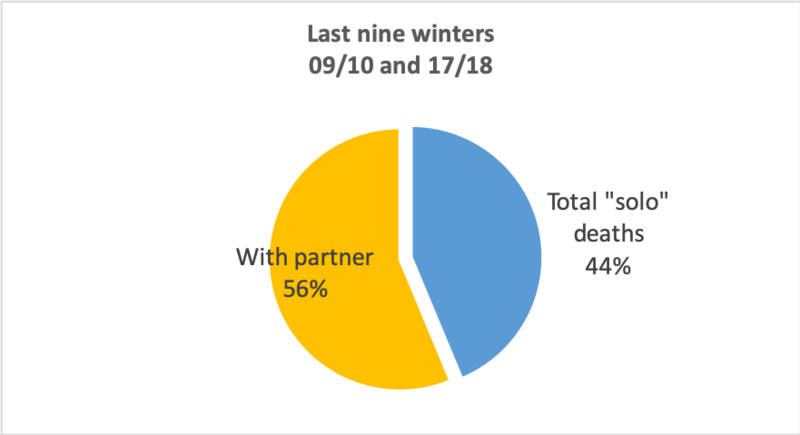
Mark Staples
2015-2024 - Director, Forest Service Utah Avalanche Center
Regarding accidents with multiple fatalities:
One of the most basic things we all learn in introductory avalanche classes is to only expose one person at a time. The idea is to limit the number of possible victims to one. Unfortunately, there have been four events this winter involving multiple avalanche fatalities (2 in CO, 3 in CO, 3 in AK, and 4 in UT).
If we say that only one person should have died in each of those avalanches instead of multiple people, then there should have been four fatalities and eight people still alive.


Regarding solo travel and being effectively solo:
There are obvious dangers to traveling solo. There have been 5 people caught, buried and killed in avalanches. Perhaps all four could have been saved with a partner.
Several years ago, Evelyn Lees and I realized that in many cases, despite traveling with a partner or a group, at the time of the avalanche victims were effectively solo because their partner(s) could not reach them in a timely manner. These people were effectively solo because their partner(s) were either:
- Too far away
- Out of sight of the avalanche
- Caught and partially buried in the avalanche
An unfortunate example occurred in January 2019 near Electric Lake in the Manti-Skyline area. "The first skier successfully skied to the bottom and waited for his partner out of sight of the slope. When his partner did not show up, he climbed back up a short distance and found an avalanche." In this case, the victim was not wearing an avalanche transceiver, but even if he had been, he was effectively solo because his partner was unaware of the avalanche and unable to respond in a timely manner.
So far in the 2020-2021 winter, 24 out of 31 fatalities (77%) involved people who were effectively solo.
In the winters from 2009 to 2018, Evelyn and I found that 44% of avalanche fatalities involved people who were either solo or effectively solo. This finding shocked us because exposing one person at a time is one of the most fundamental things we do. It's not always easy or obvious, but worth emphasizing in avalanche education and worth putting some thought into when traveling in the mountains. Read more HERE.

Regarding uphill travel:
The risk of backcountry incidents and fatalities while descending is well known and is often a main focus of avalanche training and education. However, the risk while moving uphill is less known. This study investigated avalanche fatalities that occurred while backcountry tourers were ascending.
So far in the 2020-2021 winter - there have been 19 tourers (non-motorized users) killed in avalanches. Seven were killed while traveling uphill (37%).
In the winters from 2009 to 2017, Evelyn, Linda George, and Christina Raspollini found that 32% of tourer fatalities involved people traveling uphill. This is important because we spend so much time traveling uphill. The length of exposure is greater and we are also more likely to be traveling together (vs one at a time). Also, many ski bindings have mechanisms that lock the toe pieces to a boot and don't allow it to release easily. Read more HERE.
The take-home point is that we must select safe uphill routes that are not in avalanche terrain and not exposed to avalanche terrain above us. When it's not possible to avoid ascending avalanche terrain, then a very careful assessment of the snowpack must be done, or a different objective should be chosen.






